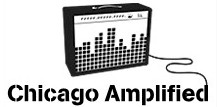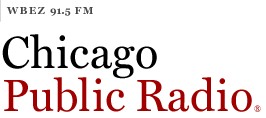

Beef: From Plains to Plate
Follow the Cattlemen’s Trail to Savory Midwest Beef Traditions
October 23-25, 2009
This event was recorded as part of the Greater Midwest Foodways Alliance Third Annual Symposium “Beef: From Plains to Plate”. Recorded Saturday, October 24, 2009 at Kendall College.
Celebrate Midwestern beef foodways by tracing the historic odyssey of all-American meat from the windswept plains of the heartland to meat processors in “cities on the make,” like Chicago, where it was packed, wrapped and sent to dinner plates around the globe. Join the Greater Midwest Foodways Alliance (GMFA) on that journey Beef: From Plains to the Plate – Follow the Cattlemen’s Trail to Savory Midwest Beef Traditions.
Beef: The Beef Industry Yesterday, Today & Tomorrow (Link does not work)
Listen for this symposium’s Opening Remarks by Bruce Kraig, followed by the morning’s keynote talk with Dell Allen, PhD, “The beef industry yesterday, today and tomorrow.” This presentation takes a look at the history of the beef industry in the U.S. from the time the Spanish Conquistadors brought the first cattle into North America up to today. This presentation highlights important events and times in the industry, including some of the influential people who made important contributions in moving it forward.
Beef: Ranch to Feedlot to Packing House
Central Region State Beef Councils presents a panel of beef producers speaking on the evolution of beef production in the Midwest. Dave Hamilton of Thedford, Nebraska speaks on Cow-Calf production, raising calves to maturity before finishing at feedlots. President-elect of the National Cattlemen’s Beef Association, Steve Foglesong, speaks on Feedlots. Dr. Ben Wileman from the Beef Cattle Institute of Kansas State University presents on modern Animal Husbandry Practices.
Beef: Grass-fed Beef and Certified Angus Beef
Kathryn L Heinze of Northwestern University presented “Grass-fed beef: (Re-) discovering traditional farming for todays consumers.” Only 20 years ago, the term “grass-fed beef” was known only to cattle ranchers and livestock commodity analysts. It was a technical term used primarily to describe meat of inferior quality and lower price that had not followed the standard process of production in the United States. Today, however, grass-fed meat and dairy products sell at a premium and are served in high-end restaurants. Historically, the movement for purely grass-fed meat arose in opposition to a system of industrial agriculture that had become dominant after World War II and almost eliminated regional variety in farming and meat products due to breeds, forage and ranching knowledge.
Followed by Mark McCully, Assistant Vice-President for supply development for Certified Angus Beef LLC, on “Certified Angus Beef: The Angus Confusion.”
The word “Angus” simply refers to a breed of cattle. But there’s more to great beef than just being Angus. While others may say Angus, do not confuse the type of cattle with the proven brand name. The world’s first and premium brand of Angus beef is the Certified Angus Beef® brand with 10 strict specifications that provide the Science Behind the Sizzle™.
Beef: Everything But the Squeal: Chicago’s Union Stock Yards
Russell Lewis of the Chicago History Museum posits that Chicago’s Union Stock Yards was the result of the fusion of urbanization and industrialization, and it represented one of the greatest industrial innovations of the nineteenth century. Meatpacking was one of the trio of Chicago industries—along with grain and lumber—that catapulted Chicago onto the national and world stage. This presentation chronicles the rise of the Union Stock Yards and its place in Chicago’s history.
Beef: From the Beef Producer to the Consumer
John Huston is Executive Vice President Emeritus of the National Cattlemen’s Beef Association. John Huston chronicles the impact of the National Live Stock & Meat Board (headquartered in Chicago until the late 1990’s) programs, research and initiatives over the years on consumer’s knowledge of beef preparation, nutrient content, purchasing, handling and safety.
Beef: Everyday Food – Ground or chopped beef
Andrew F. Smith presents “How Ground Beef on a Bun Conquered the World.” Ground beef was not a important part of the American diet until the late nineteenth century, when it captured the attention of Midwestern street vendors and restaurateurs. Within a decade, a Midwestern street vendor put ground beef in a bun and the hamburger was born. It quickly became America’s most popular sandwich, but it even soared to greater heights when a Midwestern short order cook launched White Castle and a multimixer salesman globalized McDonald’s.
Peter Engler reports on his research on “The Big Baby: A Burger Style from Chicago’s Southwest Side.” Despite increasing homogenization of the American hamburger by the large chains, regional variants persist and thrive. He focuses on one local example—the Big Baby double cheeseburger—discussing its origin, spread and evolution.
Dining Out-Steakhouse Panel
Culinary Historian Barbara Kuck speaks on “Great Midwest Steak Houses from Stage Coach Days to Present.”
Chef Hans Aeschbacher presented on “The Steak House Chef’s Vital Role in Selecting, Preparing and Serving the Finest Cuts of Beef.”
Bruce Kraig offered closing remarks and announced next year’s program: The Great Depression: It’s Food and Culture.
Beef: from Primal Cut, A beef cutting demonstration
Cutting demonstration of a side of beef donated by the National Cattlemen’s Beef Association. All those primals pieced together, picked apart and discussed by Kari Underly.
Attendees observe a live cutting demonstration and learn how the seven primals are processed into subprimals. They see firsthand how these subprimals are cut into not only familiar traditional cuts, but also today’s newer, healthier cuts. Whether you are in the foodservice industry or a food enthusiast, you will be sure to wow your colleagues with new “cutting edge” beef knowledge.
Recorded Friday, October 23, 2009 at Kendall College.